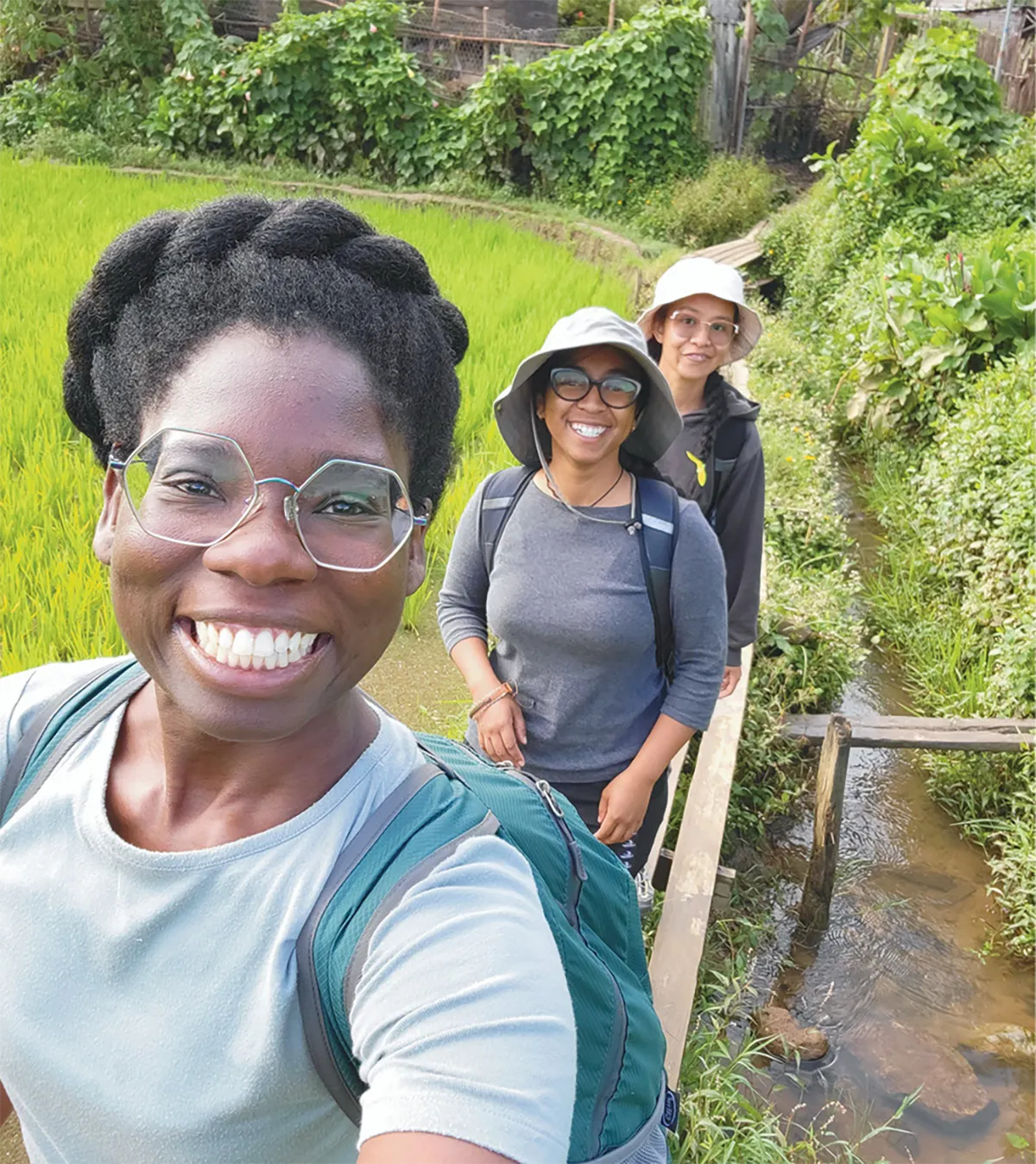

Sharing Space with Bats
n Madagascar, people share many buildings with bats, and Bat Conservation International (BCI) Student Scholar Anecia Gentles is working on learning more about how these shared spaces impact human health. Gentles is a doctoral student at the University of Georgia, working with field assistants Stèphie Raveloson and Sidonie Rakotoarisoa on a project studying insectivorous bats in eastern Madagascar. They are studying how the physical characteristics of buildings might relate to the presence of bats roosting inside and how that may translate to the risk of pathogens spreading to humans. They are also learning how humans feel about bats and sharing space.
“We are most interested in whether or not there are any health consequences for people who have to share their space with these really large bat colonies,” Gentles says. “Some of these buildings have had bats for as long as people have worked in these buildings. A lot of the schools are anywhere from 50-100 years old, and no one knows of a time when there were no bats in the buildings, so the guano buildup is quite a bit, and you can smell it from far away.”
—Anecia Gentles

Gentles’ team collects guano samples from ceiling crawl spaces, ledges, and floors in buildings like schools and hospitals. They transport samples to a lab in Madagascar’s capital, Antananarivo, to test for a fungal pathogen called Histoplasma. There are two types of Histoplasma: one that causes respiratory illness and one that causes skin lesions, and both have been found in humans in Madagascar. Then, they will bring the samples to a lab at the University of Georgia to conduct genetic analysis to identify the bat species.
People in Madagascar interact with bats in various ways, from spending time in caves for mining, guano harvesting, or tourism, in forests while logging, and even in homes, schools, and businesses where bats may be roosting. Gentles is surveying residents to learn how they interact with bats and their thoughts, beliefs, and concerns about sharing space.
“It’s really interesting to see how much people pay attention to these rather numerous guests in their home,” Gentles says. “Many people know what time the bats leave in the evening and what time they come back home.”
Gentles wants to learn more about these urban bats and human perceptions to eventually provide knowledge that can be used to develop a solution for humans and bats alike. The team is working to learn more about the possibilities of excluding bats from buildings and remediating from previous bat activity. They aim to promote community engagement and communication to ensure healthy humans and bats.